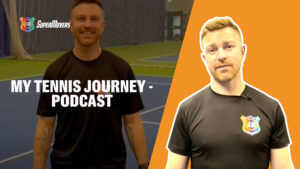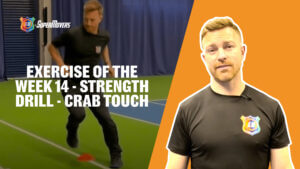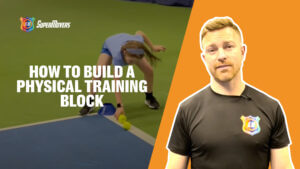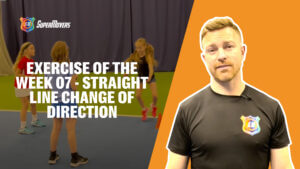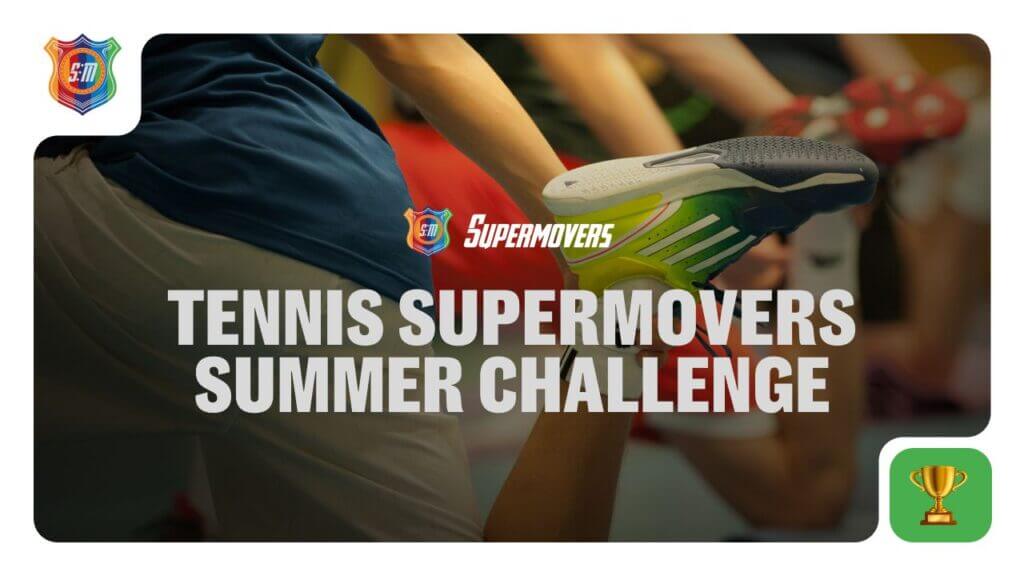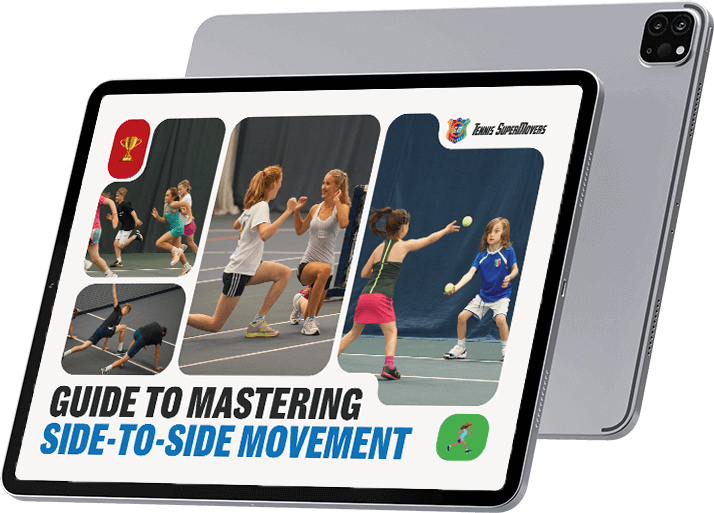The 5 Building Blocks to tennis fitness success
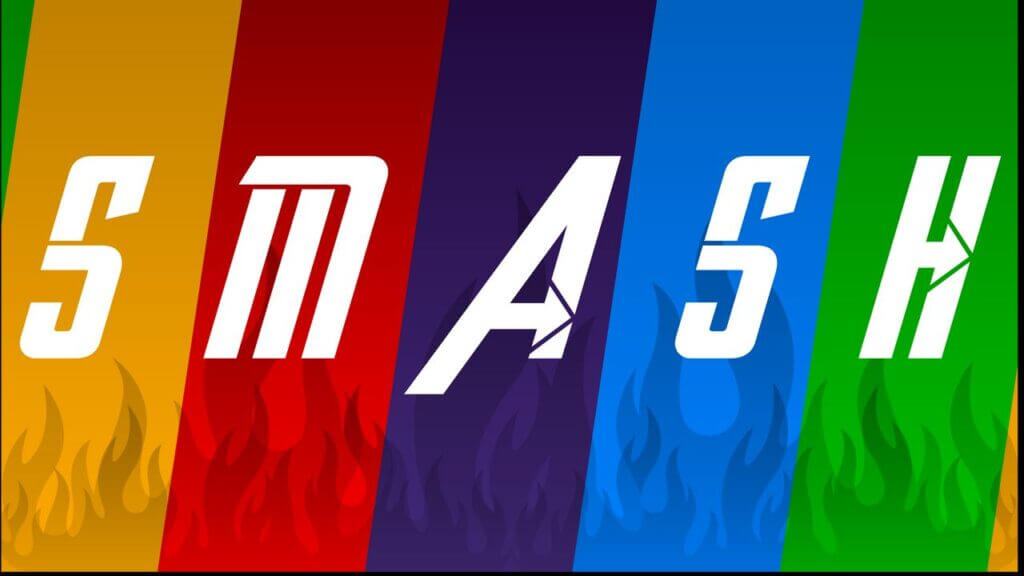
The 5 Building Blocks to tennis fitness success
Tennis S&C start-up guide
Are you new to introducing Strength and Conditioning (S&C) into physical programming for tennis?
Are you unsure on what elements of physical training you should do?
Do you know what makes a player tennis-fit?
Here, Howard Green shares the 5 building blocks needed to start your tennis fitness journey with. Incorporate them into your programming now and find out more about our membership offers here.
At Tennis SuperMovers we use the SMASH Curriculum to plan and deliver tennis S&C, this stands for Strength, Movement, Agility, Stability and Honing Coordination. By developing each of these areas, we develop a well-rounded tennis athlete, who is ready to train and compete to their full potential.
Below I will outline each of the SMASH components, explaining the goal and its transfer to tennis, I will also give you a video example of an exercise that develops that physical quality. We also have a series of blog posts called Exercise of the Week (EoW), in which we showcase a specific drill each week and give you top tips on how best to complete the exercise – if the example has been a EoW I have included a link.
Strength
The goal is to create strong ‘tennis shapes’. Because these are the most common patterns that underpin all movement on the tennis court. Age and stage relevant strength training has a dual focus of improving performance, but more importantly, reducing the risk of injury.
We achieve this by completing fundamental movement shapes such as squats, lunges, hinge patterns along with bracing and dynamic core exercises.
We can disguise strength exercises into combination tasks, in this video the player must keep the balloon ‘alive’ when touching the ground – this guides the player into completing a squat pattern, while tracking the balloon overhead to strike it once more.
Balloons and Shapes
Instagram video – HERE
Movement
The goal is to develop enhanced spatial awareness. Because greater awareness helps the player with reading the opponent and tracking the ball.
We achieve this by completing drills within a specified space, moving with different locomotion patterns, avoiding other players, reacting to signals and performing tasks concurrently.
In the drill below, players are asked to move around the area using a zig-zag pattern, were they can change direction on a cone, line or when near another player. On the command from the coach the player moves to a cone, squats to pick it up, then performs and exercise called a split-squat, before moving around the area again.
Zig Zags with Commands
Exercise of the Week video – HERE
Agility
The goal is to move with speed and intensity, because having the ability to move to balls in all directions makes it harder for the opponent to break you down. Your aim is to be both a faster thinker and fast mover.
We achieve this by focusing on all the key types of movement you need while on-court – Forward and Back, Side to Side and Multi-Directional. The drills progress across the programme in distance covered, intensity and complexity.
The drill below uses multi-directional movement and is a great one for adding competition between players, demanding speed and change of direction skills.
Square Drill
Instagram Video – HERE
Exercise of the Week video – HERE
Stability
The goal is to develop static and dynamic balance. The more balanced the player, the higher chance they can deal with shots of varying difficulty – with balls hit closer to the player producing less of a balance challenge, while on really wide balls the player must be on full stretch in difficult positions and still be able to execute a shot.
4 cone touch
Instagram video – HERE
Exercise of the Week video – HERE
Honing Coordination
The goal is to develop a very varied skill tool box. One of the ultimate goals of athlete development is movement efficiency. Because the more coordinated the player is, the more effectively they will move on the court. Additionally, high levels of coordination helps to create the building blocks of technique.
We achieve this by using a variety of drills that include handling balls as individuals and pairs, using different size areas and tasks challenging qualities such a rhythm, reaction, orientation and adaptability. The below drill is completed as an individual, with an element reaction, timing and movement.
Drop-Pivot-Pivot
Instagram video – HERE
Hopefully this post highlights what the key areas are to focus on with players, why each element is important and how to work on them – don’t forget to see the example in action via the video links!
You may be asking yourself how can I incorporate all of the above important physical qualities into tennis training? Well, the easiest way is to incorporate them into a quality warm-up that players use each time they train or compete. I have put together a handy two-part blog on this that you can read here – Part 1 and Part 2.
Also, even better than that, I have created a downloadable document for you to use with your players. It includes the video of me delivering the exercises to a small group. You will be able to listen ‘live’ as I have a microphone fitted. You will also see that you can hit the whole SMASH curriculum in just over 10min.
Download the full session plan here with video links
Let me know how you get on integrating Tennis SuperMovers into your new S&C programmes, or email me at howard@tennissupermovers.com
check out: Dropshot – with SuperMovers’ Simon Brundish
PS ~ If you want your players working on their key building blocks, then look no further than our player programme. Click here and for a limited time offer of 10% off the annual subscription by using the Back to Tennis code BTT10 (offer ends Sunday 5th September).

